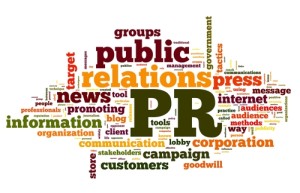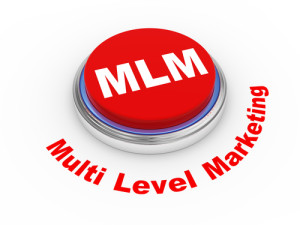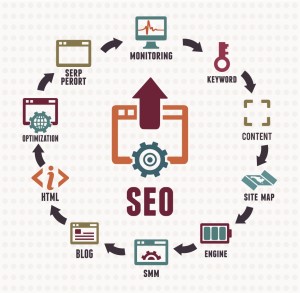Last post I started off this series with The Meat of a tasty Content Marketing burrito: valuable, original content.
While your fresh content is the heartiest, largest layer of your Content Marketing burrito, content alone is but a side dish without its burrito sidekick, the Beans: Public Relations.
The Beans: Public Relations
I’ve labeled PR the Beans because it tends to be a little more boring and spice-less compared to the rest of the ingredients in your Content Marketing burrito. Some may feel, like refried beans in most burritos, PR may not even be necessary. But for a wholesome, filling, well-rounded Content Marketing strategy that gets results, you must pursue PR in all of its forms. To strengthen this position, Cheryl Conner – a contributor to Forbes Magazine said in a recent article entitled The 15 Steps to ‘Power SEO’ (PR Is The New SEO), “I would go so far as to maintain that public relations, in the form of quality content, is the New SEO.”
What is Public Relations?
Plain and simple: PR is any media attention outside of Social Media. Many PR experts believe Social Media is actually a major part of PR, and in some cases it is. But when part of a full Content Marketing plan, Public Relations is separated from Social Media.
Every business owner – whether a small or a large business – craves media attention. But be careful not to lust after media attention, a mistake that often occurs when a small business owner wants to milk every drop out of potential publicity, cramming their business name in every quote and effectively, immediately turning off a reporter.
Within my first week on the job for a 60-employee company we’ll call “PsycheSplit”, I got a couple local TV reporters out to our offices to cover the silly results of an intra-office bet. You see, two PsycheSplit employees and State College fans had bet two of their PsycheSplit colleagues who were Private College fans that State would win the upcoming rivalry football game. Both parties agreed that if their team lost, they would have to go for a swim in the frozen pond outside of the office building. State College won, and the date of the dive was set for the following week.
My pitch to the TV reporters was simple and effective, mostly because I knew the video they’d grab would be a hilarious touch to their local evening news program.
Sure enough, two TV vans pulled up an hour prior to the snowy swim to interview the winners and losers of the bet. But while I gave the reporters a quick tour of the office on our way to the betters’ cubicles, the CEO of PsycheSplit jumped out of his office and immediately started chatting up the reporters and trying to share his ideas of media philosophy … as if the reporters were there to speak with him. He went on and on about how the reporters should do a story about him and the business empire he built … yada yada yada.
The reporters and cameramen were instantly turned off by the overzealous, power-hungry CEO, and did their best to get past him without being rude. But things got much, much more uncomfortable for the poor TV crews.
The entire company crowded around the pond to watch their crazy colleagues dive into the icy pond. The cameras were ready and the countdown began: “Three … two …”.
Before anyone reached “One!” the CEO boisterously yawped “Stop! Wait! Wait until the flag is ready!” He shoved a flag into the hands of a random employee and told him to display it behind the divers. It was a PsycheSplit flag with the company logo. Before the crowd could restart the countdown, the reporters requested that the flag be moved off to the side. Once again, the overzealous CEO was thwarted. But he still had one more “brilliant” idea.
The countdown restarted, the losers of the bet jumped into the icy water, and before anyone could laugh and cheer and heckle their freezing colleagues, the CEO began to loudly yell the company name so it would make it in the broadcast. “PsycheSplit! PsycheSplit! PsycheSplit!” The chant didn’t catch on because it was totally unnatural, especially because the bet had almost nothing to do with PsycheSplit.
The end result: one of the stations intentionally neglected the PsycheSplit name throughout their entire 2-minute feature of the pond dive. The other station mentioned the name, but blurred out the flag and only did a 30-second clip.
What did the CEO do wrong? He shoved his company’s name in the face of members of the media, the type of people who daily toe the line between advertising and reporting. Had the CEO kept his mouth shut and let the TV crews do their jobs, PsycheSplit’s name would’ve been mentioned 2-3 times by each TV news program. But instead, the reporters were so enraged by the attempt to cash in on what the CEO perceived as “free advertising”, they lashed back and kept the whereabouts of the pond dive as anonymous as possible.
How does this anecdote relate to your small business, your tiny empire you hope to build with positive publicity? It relates in several ways.
1. Unless you’re already famous, the media never wants to hear about your business from you. Harsh, huh? You want to get the word out about how your business successfully creates subsidiary income for dozens of stay-at-home moms? If you want a reporter or editor to care, your info must come from another source. The one thing reporters and editors hate most is an egotistical business owner; one who calls up the newspaper only to say that their business is a big deal and the newspaper should cover it because it’s so special. No. Never. That’s what a friend does, or a qualified PR Specialist. If you do that yourself, they’ll forward your call straight to the Advertising Director who’ll offer you some ad space.
One thing you can do, however, is reach out to the media offering a helping hand. What are you an expert in? If you’re a Direct Selling small business owner, you’re an expert in Multi-Level Marketing and Direct Selling. Email your local business reporters and editors and simply offer your expertise for a quote/interview should they wish to do a story on local MLM businesses or successes, or an article on subsidiary income possibilities. It’s not bragging. It’s not telling a reporter what to report on. It’s simply offering a service should they need it. Quite unlike the CEO of PsycheSplit, who straight up told the reporters that they should do a story on him.
2. When the reporters do a story related to your area of expertise, and if they already have your contact info so they can reach out to the local expert, they’ll give you a call. As part of their reference to you in their story, they’ll mention your business’s name and success and possibly even your contact info and/or web site. There’s no need to make the interview all about you if the topic isn’t, just like how the PsycheSplit CEO tried making the story about PsycheSplit even though the topic was a silly bet.
3. Proper media training is to mention your business’s name and/or successes when appropriate for conversation. Some media specialists believe you should mention your business’s name in every sentence or as often as possible. But as mentioned above, your name will make the news regardless of whether or not you say it. Be polite, courteous, and conversational. Definitely do not be controversial in any way, shape, or form, as doing so will reflect poorly on you and your business.
How do you get publicity?
As mentioned above, a great way to get your name and your business in the news is to simply offer a helping hand for a quote or an interview with an expert. Another great way to get PR is what’s called a media event. If you live and work in a small town or community with its own news media, a media event could be anything from a ceremonial ribbon-cutting to a 100th Customer party. If you live in a town that doesn’t have its own news media, or if you live in a big city, creating an appealing media event may be more tricky. One possibility is to hold a small press conference announcing a partnership with a larger local business. Another possibility is to host or take part in a local charity event.
On occasion, you will get unwanted publicity – perhaps some negative Nancy trying to discredit your company. PR in today’s digital world can exacerbate issues like these, but there are things you can do. Ground Floor Media recommend telling the truth, proving your position with action, carefully selecting your spokesperson, and remaining calm. Read Laura Love’s full article here.
Press Releases
One of the biggest lies that seemingly everyone believes is that “If you want the media to run a story about your business, send out a press release.”
Newsflash: if you don’t have a great story to pitch, your press release is worthless. Another newsflash: the beginning or success of your business is not a great story unless you just passed the $1 billion revenue mark.
All of that said, there are still good reasons to do a press release, especially one distributed through PR Newswire (my personal favorite for press release distribution):
1. SEO
A press release with specific keywords linked to your web site immediately boosts your Google ranking within a week or so. To get the SEO results, however, you must use one of the big press release distribution wires like PR Newswire or Business Wire, which tend to get pretty pricey ($200 to $900). With two target keywords linked to your web site and with several mentions of your local city and state and other local keywords (not linked), your press release will launch your site straight to the top of local Google rankings.
I should warn you, however, that you should only mass-distribute a press release once a year at most. As of last month or so, big news hit the SEO landscape when Google declared war on the press release distribution theories. While the details are not completely released, it’s been said that unless your press release has real value and is not a sales pitch of any kind, your web site will get dinged by Google. It goes back to the Meat theory of Content Marketing: valuable content. Your press release better be valuable or your web site could be SEO toast. For additional strategy, Alison Krawczyk and Sarah Szewczyk outline some terrific ideas for using Public Relations to increase your business’s visibility online in Why PR Needs SEO (and Vice Versa).
2. Credibility
Virtually every company has a page or a section of their web site devoted to their media mentions. When you use Business Wire or PR Newswire, your press release gets automatically published on auto-generator pages within several major news media outlet web sites, like The Wall Street Journal, Fox News, MSNBC, and so on. This does not mean anyone at those media outlets saw your press release. What it does mean, however, is that you can post an “As Seen On MSNBC.com” logo on your web site, which gives your business instant credibility to visitors. It may seem bogus, but almost every time you’ve ever seen a web page with a “Featured in the Wall Street Journal!” logo or headline, it’s simply because they distributed a press release on a big news wire that automatically loads onto WSJ.com. Slimy, yes. But that’s digital marketing … and refried beans.
Another intersection of PR and SEO lies in the possibility of links. When you write an article for an online news source, or when an article that mentions your web site is published on an online news site, your web site gets major thumbs up from Google. It’s the golden intersection of PR and SEO that few PR professionals know, and even fewer SEO professionals can accomplish: a real, relevant news article on a reputable news site, published by the site (not distributed like a press release), with a link to your web site. Furthermore, try Darren Rowse’s recommendation and link out to case studies from your articles to add even more credibility. Consider this and his 11 other keys to adding credibility to your online posts from his article on ProBlogger.
Hypothetical example: you read an article about Burger King’s new ad campaigns at Advertising Age’s web site, www.adage.com. Within the article is a link to Burger King’s web site where you can view Burger King’s latest ad campaign. Bam. Burger King will now rank tops for several keywords like “burger commercial”. Why? Not because Burger King did anything special to earn the high ranking for “burger commercial”, but because Ad Age is a highly reputable news site with a Page Rank of 7, and the article is about burger commercials with a link to burgerking.com.
All in all, Public Relations is a necessary, albeit less-exciting, ingredient to your successful Content Marketing burrito. Sure, it’s got a few potentially negative side effects, like a bloated ego, after effects that leave a sour look on a reporter’s face, or smelly SEO rankings. But if done properly and timely, effective Public Relations will make your Content Marketing machine a mouthful of wonderment.
Guest Blog Post: Zach Zavoral is an award-winning journalist who specializes in public relations, advertising, SEO and social media.






